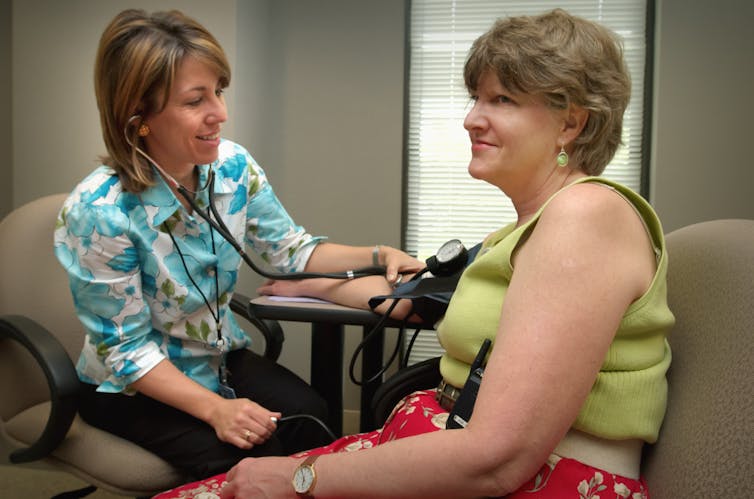Federal Health Minister Mark Butler has long said Medicare is in the worst shape it’s been in decades. Premiers have come to successive national cabinet meetings saying primary care is failing – and demanding reform and investment.
Fortunately, the policies Minister Butler outlined today at the National Press Club to strengthen Medicare live up to challenge. These reforms will be funded with a total of A$2.2 billion
They certainly won’t fix everything. But instead of kicking the can down the road, or just addressing superficial symptoms, they start to tackle some of the biggest challenges in general practice: outmoded technology, GPs working with little support, a broken funding model, and restrictive regulations.
Health and housing measures announced ahead of budget, and NDIS costs in first ministers’ sights
Diagnosing the problem
There are many visible and urgent crises in health care, ranging from falling rates of bulk-billing to overwhelmed hospital emergency departments. But the minister zeroed in on the one big structural failure driving many of these problems: Medicare hasn’t kept up with the health needs of Australians.
Medicare was established in the 1980s. Today, Australians are living longer, often with chronic diseases. Chronic diseases – such as heart disease, diabetes, asthma, and depression – are the leading cause of illness and death. Almost half of Australians have one chronic condition; more than half of Australians over 65 have two or more.

Unsplash/CDC
As Minister Butler noted, Medicare has not kept up and has “started to show its age”. A system designed for quick, one-off consultations with doctors isn’t a good fit for the more complex range of ongoing care and support many patients need today.
To update Medicare, the minister announced three areas of reform.
1. Modernising digital systems
With people likely to have multiple health conditions, and to see a range of professionals across the health system, it’s more important than ever for patients and clinicians to have relevant and up-to-date health information. That helps clinicians understand their patients’ needs. It also means patients don’t have to provide the same information again and again, or have duplicated, wasteful tests.
My Health Record is meant to empower patients – but with little useful information stored, is it worth saving?
Australia’s digital systems are outdated, hard to use and ineffective. My Health record, our main digital health tool, is only used by a small minority of specialists, private hospitals and allied health providers. According to Minister Butler, only one in ten specialists use it, and only one in five radiology test results (such as X-rays or MRIs) are uploaded.
Computer systems in practices and hospitals usually can’t talk to each other, and often they aren’t connected to My Health Record.
To start to address this, more than $950 million will be spent on digital health, including keeping the Digital Health Agency running and improving My Health record.
2. Building bigger teams
To respond to the growing complexity of people’s health needs, most countries are moving towards “multidisciplinary” teams in general practice. Those teams might include nurses, physiotherapists, pharmacists, psychologies and administrative roles. This approach can improve care and take pressure off GPs.
As with digital systems, Australia is well behind other countries. Our GPs are more likely to work on their own, or with little support. That’s because the way we fund general practice is stuck in the past, mostly restricted to paying GPs for disconnected, one-off consultations.
The Workforce Incentive Program, which funds general practices to hire a range of different health professionals, will be increased. For small clinics, and in areas with too little care to go around, Primary Health Networks (regional bodies responsible for improving primary care) will fund and attract allied health professionals and nurses to work in GP clinics.

AAP/Lukas Coch
But the biggest change is a new way of funding care. Our outdated fee-for-service system rewards rushed consultations, is complex and confusing for doctors, and blocks team-based care. For clinics and patients who choose to participate, a new system dubbed My Medicare will change that.
Patients will register with a preferred practice. The practice will then get a budget for treating them, on top of fees for each visit. Getting a patient-centred budget alongside visit fees will give care teams the flexibility to plan and deliver care in new and better ways.
Registering with a clinic will support strong relationships between patients and their care teams. Funding will be focused on that relationship, not on isolated visits, and will reflect the work of the whole care team, not just the GP.
3. Unlocking workforce skills
Along with measures to attract nurses to primary care settings, there will be a review of the barriers that stop health professionals using all their skills.
Australia has a thicket of inconsistent regulations and complex funding rules that result in double-handling, high costs, wasted talent and GPs having to do too much. The review is an opportunity to clear many of these barriers away, and make sure that workforce roles reflect the best evidence about how to provide safe, high-quality care.
Pharmacists will also do more, with new funding for free vaccinations and expansions to treatment for people addicted to opioids. And there will be more training places in primary care for nurses, and efforts to attract nurses who have left the profession back into general practice.
Should pharmacists be able to prescribe common medicines like antibiotics for UTIs? We asked 5 experts
Evolution not revolution – and a team effort
The breadth of the proposals is important – there will be little progress without improvements in all those areas.
At the National Press Club, Minister Butler said “remaking Medicare for the 21st century will take persistent evolution, not overnight revolution”.
That incremental approach is important too, including making the most complex reform, My Medicare, voluntary. These changes will be hard, so participating clinicians and patients must be convinced of the benefits, willing to change, and ready for inevitable setbacks.

Unsplash/CDC
The reforms won’t satisfy everyone, but this might be the biggest opportunity for primary care reform in a generation.
The minister remarked on the “pointy elbows and loud voices” of the various professional groups in health care that provided input through his Strengthening Medicare Taskforce. This package needs the support of all the workforce groups involved in primary care, and a strong voice for patients. Hopefully they will work together to make sure these reforms succeed.
Here’s why pharmacists are angry at script changes – and why the government is making them anyway




